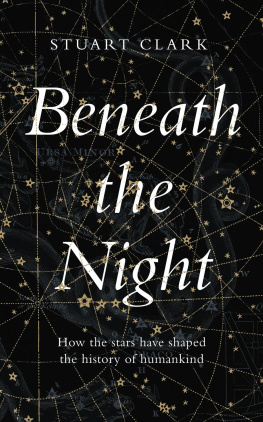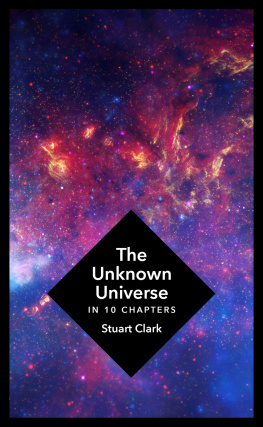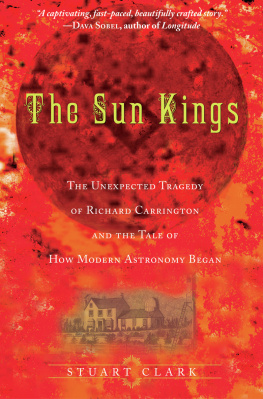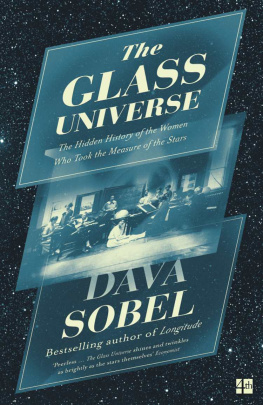The next time its a cloudless night, step outside and find somewhere dark. It should be well away from streetlights, trees and buildings so that you can get the best possible view of the night sky but dont raise your gaze immediately. It will take thirty or forty minutes for your eyes to fully adjust to the dark. During that time, they will become from ten thousand to a million times more sensitive to light. Perfect for stargazing!
Once the time has elapsed and you have found your spot, look up. Depending on the atmospheric conditions and the sensitivity of your eyes, you will be able to see some three or four thousand stars, each one a distant sun in its own right. Each one a possible home to a family of planets.
In most people, this experience tends to bring about feelings of tranquillity and reverence, and often a sense of their own insignificance. Even having spent my entire life studying the night sky, the sight of it never fails to fill me with awe and excitement. As Ive sought to understand the stars and come to terms with the sheer vastness of it all, Ive lately come to realise that it is not the number or the nature of the stars that is the most enchanting thing about them. It is that, compared to our brief lives, the stars are immortal.
Shakespeare saw the same stars in the same patterns that we do. So did Galileo, Columbus, Joan of Arc, Cleopatra, and the first man-ape to look up in curiosity. From space age back to stone age, to be beneath the night is to witness something that every other human who has ever lived has also seen. It is our common heritage.
This book is a history of our relationship with the night sky. More than a book about our understanding of astronomy, it is the story of how our fascination with the heavens has shaped society, culture and religion as well as science. Beyond enabling our scientific understanding of the universe, the stars have inspired our poets, artists and philosophers; given us a place to project our hopes and fears; revealed our true origin and hinted at our ultimate fate.
The very fact that we look to the night sky in our search for meaning is one of the indelible hallmarks of our humanity. As this book will show, to tell the story of this nocturnal fascination is to tell the story of what it is to be human.
There is no definitive theory as to how or why humans began to relate to the night sky. But there is a growing body of evidence from a number of different disciplines that suggests it is at least plausible to believe our fascination with it started almost as soon as recognisably modern humans evolved, almost seventy thousand years ago.
The modern impetus to look this far back in prehistory comes from the work of an American journalist turned archaeologist called Alexander Marshack. As with much of the rest of the world at the time, Marshacks fascination with space began on 4 October 1957, when the Soviet Union succeeded in making a rocket powerful enough to launch the worlds first spacecraft, Sputnik One. What makes Marshack stand out from many of his contemporaries, however, is that he wasnt just fascinated by the technological achievements of the Space Age. His interest was primal: he wanted to know what had driven humans to want to touch the night sky.
Five years later, in the autumn of 1962, President John F. Kennedy made his now famous speech at Rice Stadium in Houston, Texas, in which he committed the USA to landing a human on the Moons surface before the decade was out. Marshack set out to write a book similar to that which youre reading now, in an attempt to explain how and, crucially, why humankind had reached the point in history where it was possible to bring such a mission into reality. But as soon as Marshack began his research, he found it an almost impossible task.
He spent much of 1963 travelling across America interviewing people involved in the burgeoning field of space exploration. His interviewees included many of the pre-eminent experts of the time, such as President Kennedys science adviser Dr Jerome Wiesner, NASAs chief administrator James Webb, representatives of the National Academy of Sciences and the Air Force, and numerous academics. He also spoke to their counterparts in the Soviet Union. But no one could give him a definitive answer to the simple question of why humankind was exploring space. It was as if the urge to do so was a basic human compulsion.
And, indeed, examples of this particular compulsion resonate through history. In 1596, the great German mathematician and astronomer Johannes Kepler wrote:
We do not ask for what useful purpose the birds do sing, for song is their pleasure since they were created for singing.
Even further back, around 2,400 years ago, the Greek philosopher Plato wrote his classic work The Republic. In Book VII, he hypothesised that our eyes were formed for the study of the night sky, but that rather than letting its sheer beauty beguile us, we should exercise our minds to understand the order behind the celestial arrangements. Again, Platos implication is clear. The reason we should study the night sky is the same one that British explorer George Mallory gave when asked why he wanted to climb Mount Everest: Because its there. Kennedy even used Mallorys quote in Houston for the reason why America should land on the Moon.
*
To try to explain the emotional draw of the night sky, Marshack first tried to identify when our fascination with it began. This search took him back to the time before civilisation and agriculture, before history itself, to when humans lived in hunter-gatherer communities tens of thousands of years ago. Instead of a book about space, he ended up writing one about the prehistoric origin of human science and culture and the pivotal role that the night sky played in our awakening. As his wife was quoted as saying in his 2004 New York Times obituary: He was so intrigued that he left the space age and went back to the ice age.
The ice age in question was the one that gripped the world from 2.6 million years ago to just twelve thousand years ago. During that time, most of northern Europe was submerged beneath the arctic ice sheets, and the glaciers of the Alps reached far beyond their modern boundaries. It was also during this period that various species of humans emerged as distinct from the other great apes. This process began in Africa around 2.3 million years ago with the appearance of Homo habilis, and culminated approximately 200,000 years ago with the arrival of our own species, Homo sapiens. However, the tipping point for our story did not come until another 130,000 years after the arrival of our species, when something truly special happened: we began to think differently.
No one knows why this should have happened. It could have been some random mutation in our DNA that suddenly allowed our brains to perceive the world in more abstract ways, or it could have been a gradual process that began much earlier with the appearance of Homo sapiens.
By around forty thousand years ago, a human population of some five million (as compared to todays eight billion) had spread from Africa across the globe. Archaeologists identify this period as the Upper Paleolithic. It extends from around fifty thousand to ten thousand years ago. As hunter-gatherers, the humans of this era obtained their food by the collection of wild plants and the trapping of wild animals. In the artefacts left behind we can see the development of logical thought that leads to technology: oil-lamps, boats, bows and arrows, sewing needles. And there are more than tools on offer.

